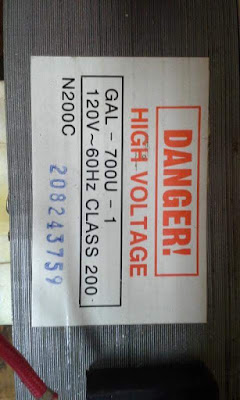Neutron Activation of Manganese Using Am-241 and Beryllium
Here's a quick little neutron oven I piled together.
Radioisotope AM-241 gives off alpha radiation.
Beryllium hit by alpha radiation gives off neutrons.
Neutrons hit Manganese which gets irradiated and changed--also giving off gamma radiation.
Gamma radiation serves as the indicator that activation has taken place.
Our victim: good of Manganese Dioxide. It's a black power. I put some in a zip lock baggie for the test. Underneath the bottle is some hdpe plastic. Not really needed, but it's important to note that some elements need slowed down thermal neutrons to be activated. Supposedly, Manganese can be irradiated by fast (unmoderated) neutrons--thus I don't really need the hdpe plastic to slow them down, but what the heck: I've got tons of moderators: hdpe, paraffin wax, wax with boron in it, etc.
Final cap containing additional AM-241.
Various Am-241 sources piled on top of a piece of beryllium. The beryllium came from a defunct x-ray machine.
Awesome old ionizing smoke detector. It has 80 micro curies of Am-241 in it, instead of less than 1 micro curie like modern smoke detectors.
The unused portions (for my work) of the smoke detector.
Here's the big-boy AM-241 source. Yes, there are three sources in many of these big old smoke detectors!
The radioactive part is under the little cap at the top of this photo.
See that screw in the center? That's the adjustment screw that you can use to adjust how much AM-241 is exposed from the third AM-241 source when the smoke detector is in use.
Pyr-A-Larm (Pyralarm) smoke detector. This one is an F 3/5A and was just loaded with Americium 241 radioistope sources. Three in all! This is the "before" photo before I started disassembly.
These are always on eBay for $120, but sometimes they pop up for much, much less. Just be patient.
From reading the works of Carl Willis I found that radioactive manganese has a half life of about 2.5 hours, so you should let it irradiate in the neutron fluence for double that.
I'm not sure my gamma probe will be able to detect this low amount of gamma, so I may have to let the sample sit for a half-life or two in my gamma spectrometer setup.
Results to follow later and will be posted here. Busy at work and I don't have time to babysit a 5 hour gamma spectrometer run :)
Update: here's a pic of my gamma spectrometer after only two minutes. Notice the huge peak at 823mev! Success!!




































